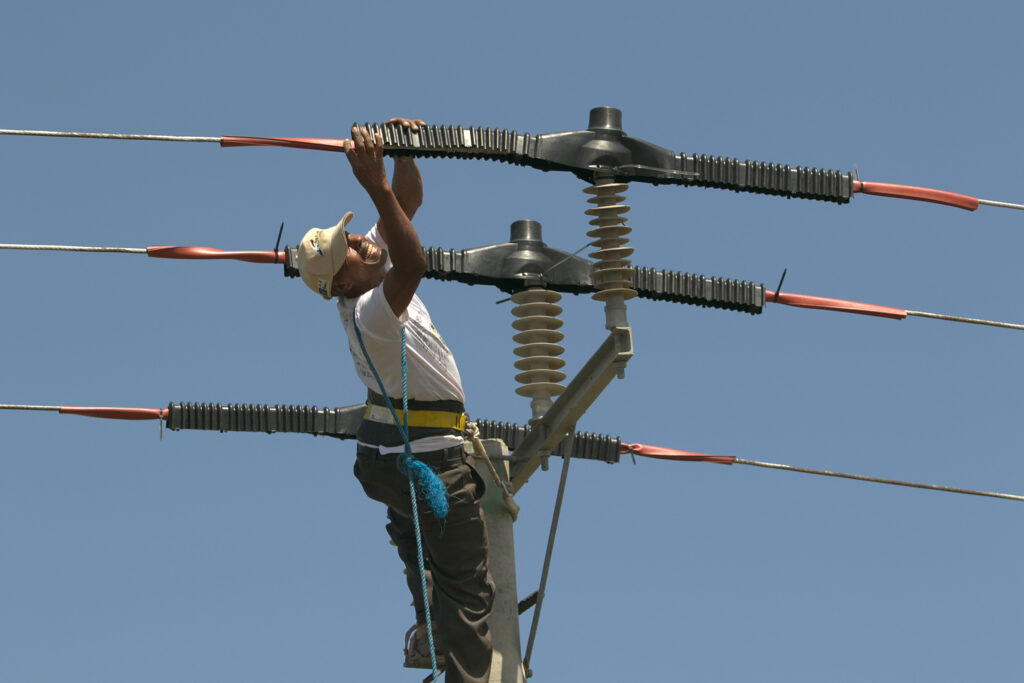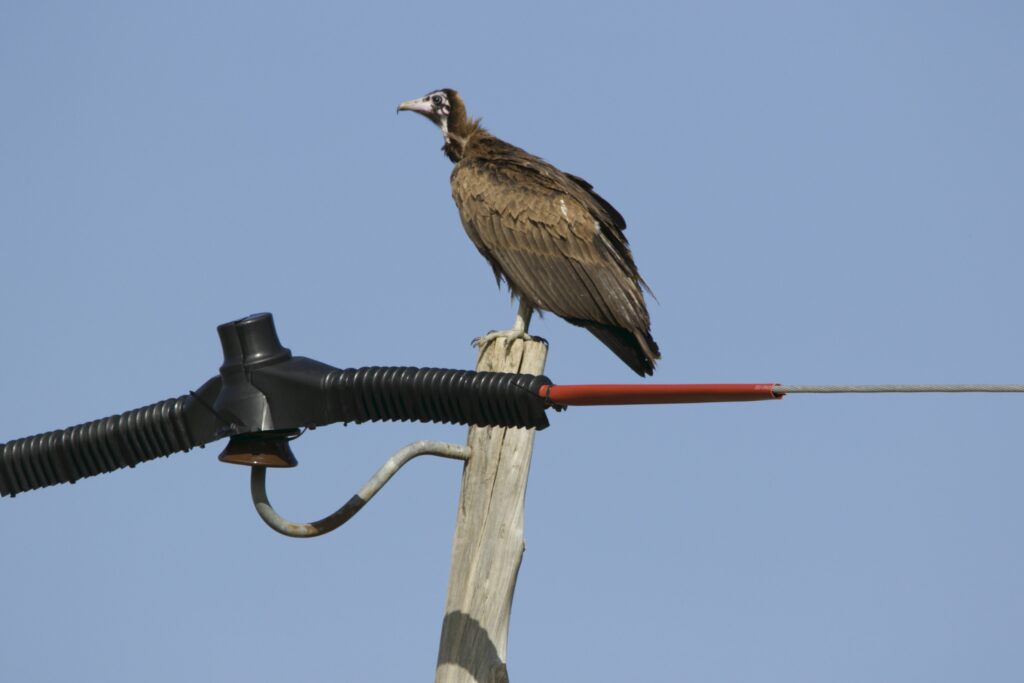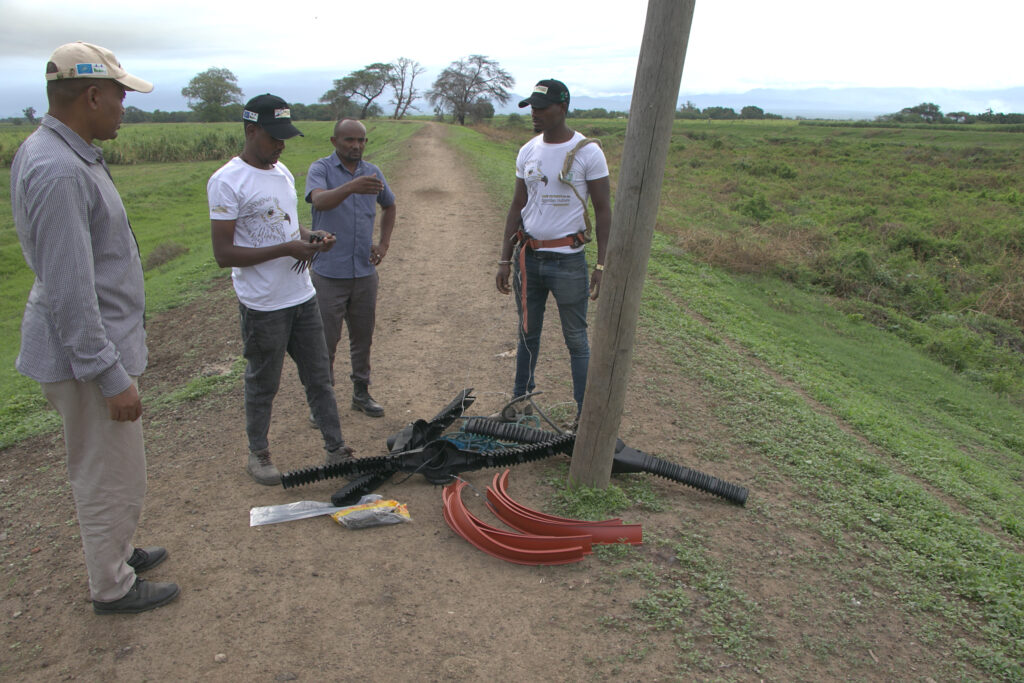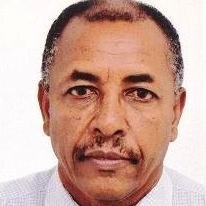Fostering Partnerships for Bird-Safe Energy in Ethiopia

As part of the Migratory Soaring Birds (MSB) Project, a total of 182 poles were retrofitted in Ethiopia's Central and Eastern Regions in 2023
It is estimated that one out of five of our entire world’s bird species migrate. These feathery species travel thousands of kilometers on routes collectively known as flyways, across continents in search of suitable feeding, breeding, and resting grounds. The Rift Valley/Red Sea flyway is the second most important flyway for migratory soaring birds in the world, with over 1.5 million birds of at least 37 species, including 5 globally threatened ones, using this corridor to move between Africa and their breeding grounds in Europe and Asia.
Migratory Soaring Birds (MSBs) including raptors, pelicans, stork, among others, use columns of rising air, known as thermals, to gain height and glide to cover long distances, hence using little energy in flight. Majority of MSBs are large-bodied birds and are highly vulnerable to the impact of aerial infrastructures, including powerlines and wind turbines.
“Migratory Soaring Birds are exposed both to electrocution and collision risks, especially, if such infrastructures are poorly deployed in their habitats or migratory routes”, said Alex Ngari, Migratory Birds and Flyways Conservation Programme Manager, BirdLife International Africa.
Energy Deficit
Africa has the lowest access to electricity per capita; demand outstrips access with more than 600 million people without connection to electricity or just over 40 percent access rate. This also has a significant impediment to the continent’s socio-economic development. Hence, there is increase in energy developments across the continent, but which poses a threat to biodiversity particularly MSBs.
Like many countries on the continent, Ethiopia has an energy access deficit, characterized by low electrification levels, dependency on traditional energy sources include fossil fuels, in addition to low standards of energy efficiency. High demand for energy in the country has led to increasing focus on renewable energy sources. In tandem with this growth is concern that these energy infrastructure developments would negatively impact biodiversity particularly migratory and resident bird species which are facing multitude of challenges along their migratory routes.
During the first phase of the Global Environment Facility (GEF)/United Nations Development Programme (UNDP) funded Migratory Soaring Bird (MSB) Project which ran from 2013 to 2018, studies were conducted to identify development sectors which posed the greatest risk to MSBs yet offered the best opportunities for mainstreaming gains.
Inevitably, the energy sector emerged as a competitive sector, and was chosen as one of the focal sectors. Stakeholder analysis and partner engagements were then carried out, in addition to awareness raising about birds and the energy sector which increased by at least 70% among the partners and stakeholders. This phase offered great opportunities for both energy and conservation authorities become more aware of the bird-energy infrastructure problem in the country.
In 2018, the second phase of the Global Environment Facility (GEF)/ United Nations Development Programme (UNDP) funded Migratory Soaring Bird (MSB) Project was launched. The project focused on mainstreaming migratory soaring bird conservation considerations into the productive sectors including Energy, Agriculture, Tourism, Hunting and Waste Management along the Rift Valley/Red Sea flyway.
In Ethiopia, the project was implemented by BirdLife International in collaboration with the Ethiopian Wildlife and Natural History Society (EWNHS), the national BirdLife partner. The country is home to the largest known wintering congregation of the Egyptian Vulture (Neophron percnopterus), a globally endangered species and a long-distance migrant. Over the years, thousands of birds including raptors, storks, might have died because of electrocution or collision with power lines in the Rift Valley/Red Sea region.

Laying the Groundwork
In February 2020, Ethiopia signed the Memorandum of Understanding on the Conservation of Migratory Birds of Prey in Africa and Eurasia (Raptors MoU) at Conference of Parties (CoP) 13, a significant step towards strengthening the protection of migratory birds of prey within the country. Following this important milestone, in November 2020, under the support of the MSB Energy Project, a quadripartite Memorandum of Understanding (MoU) between the Ethiopian Electric Power (EEP) – responsible for generation, transmission and management of high-voltage powerlines in the country) Ethiopian Electric Utility (EEU) – responsible for distribution and management of low and medium-voltage powerlines, Ethiopian Wildlife Conservation Authority (EWCA), and EWNHS was signed.
The MoU aimed at cultivating harmony between energy infrastructure development and the conservation of MSBs and other vulnerable birds in Ethiopia.
“This collaboration initiated with the energy companies is already proving to be an inspirational first step towards development of bird safe energy in the country”, said Mengistu Wondafrash, Executive Director of EWNHS.
For the first time ever in the Ethiopia’s history, EEP, EEU, EWCA and EWNHS carried out joint field missions to identify dangerous/killer energy infrastructures in parts of the Oromia & Afar Regional States, Central and Eastern Regions of Ethiopia, respectively. Following the mission, a rapid action plan was developed to retrofit the killer powerlines for a double win, i.e., saving species and achieving stable power supply. Consequently, priority infrastructures were identified in various areas including Koka, Metahara, Logia, and Samara in the two regions.

With the consent and guidance of EEU, retrofitting materials were procured and imported to Ethiopia through the financial and technical support of both MSB/Energy and Egyptian Vulture New LIFE Projects. After having built the capacity of the EEU concerned staff, a total of 182 poles were retrofitted within a period of three weeks, by deploying a team of 15 experts drawn from EEU and EWNHS.
“I am really thrilled to see the retrofitting of identified killer infrastructures has been successfully completed”, said Dagimhiwot Fantahun, Director of the Environment, Social, Health and Safety Directorate of EEU.
“This pilot action is a breakthrough in triggering the interest and commitment of the company to be heavily engaged in similar endeavors in the times to come to make our energy infrastructures bird-friendly”, she added.
Looking Ahead
BirdLife and EWNHS have worked together to expand the partnership to also include government departments that are involved in waste management at municipalities and management of natural resources for a concerted efforts to minimize the impact of energy infrastructure on birds and other animals. Additionally, Ethiopian Energy Working Group on Reconciling Energy Sector Developments with Migratory Species Conservation has been constituted with EWCA as the current convener. The overarching objective of the Working Group is to enhance awareness and facilitate the involvement of all relevant stakeholders in the process of reconciling energy sector developments with nature.
“The successful retrofitting of the priority killer power poles is a testimony of what functional partnerships for nature that BirdLife is promoting across the flyway can do. For Ethiopia, it is the clearest signal that the energy sector is determined to take steps to ensure that it grows but in harmony with nature and birds. BirdLife is prepared to support this green growth“, concluded Ngari.
Header image: Retrofitting of power lines in Ethiopia © EWNHS

“This collaboration initiated with the energy companies is already proving to be an inspirational first step towards development of bird safe energy in Ethiopia“
Mengistu Wondafrash, Executive Director, EWNHS